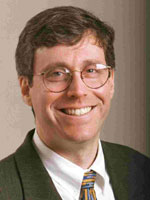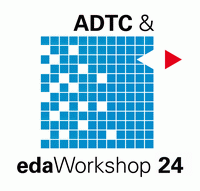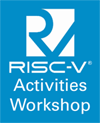Bright Longterm Prospects for EDA
Peter L. Levin, General Partner Techno Venture Management
Abstract
The longterm prospects for EDA industry have never been brighter, yes, even in the current climate of contraction and fear. The large houses are injured, the foundries struggle, and the small fab-less design shops whither under pressure from their venture backers, unable to get the validating design wins because, it seems, nobody is winning right now. But the semiconductor industry has slowed, not stopped, and technology innovations - like 90 nanometers, like RF and wireless, like yield optimization - relentlessly continue; basic discovery is safely insulated from the vagaries of market indices. New products, new profits, will require sophisticated design support; commodity tools and tired flows won‘t deliver what we need now. Today, we‘re dickering over price and timelines, not if but when.
Curriculum Vitae
 Peter L. Levin joined TVM in March of 1999 and focuses on infrastructure technologies, ranging from semiconductor devices and fabrication to software design and simulation. He leads or co-leads TVM’s investments as a director of ClearCube Technology Inc., Gold Wire Technology Inc., IC Mechanics Inc., Interactive Silicon Inc., and Neolinear Inc., and as case manager for MorphICs Technology Inc. Prior to joining TVM, he was the associate dean for research and graduate studies at the College of Engineering at Boston University, and a tenured member of their Electrical Engineering faculty. Dr. Levin has previously worked in the White House, first for the Director of the Office of Management and Budget as a White House Fellow, then as Assistant to the Counselor to the President, and finally in the Office of Science and Technology Policy. He was also an Alexander von Humboldt Fellow and spent a sabbatical year as a guest professor of Mathematical Physics at the University of Darmstadt. Dr. Levin founded, and for eight years directed, the Computational Fields Laboratory at Worcester Polytechnic Institute, and was a National Science Foundation Presidential Young Investigator. He holds three degrees in Electrical and Computer Engineering from Carnegie Mellon University, and enjoyed postdoctoral training at the Technical University of Munich.
Peter L. Levin joined TVM in March of 1999 and focuses on infrastructure technologies, ranging from semiconductor devices and fabrication to software design and simulation. He leads or co-leads TVM’s investments as a director of ClearCube Technology Inc., Gold Wire Technology Inc., IC Mechanics Inc., Interactive Silicon Inc., and Neolinear Inc., and as case manager for MorphICs Technology Inc. Prior to joining TVM, he was the associate dean for research and graduate studies at the College of Engineering at Boston University, and a tenured member of their Electrical Engineering faculty. Dr. Levin has previously worked in the White House, first for the Director of the Office of Management and Budget as a White House Fellow, then as Assistant to the Counselor to the President, and finally in the Office of Science and Technology Policy. He was also an Alexander von Humboldt Fellow and spent a sabbatical year as a guest professor of Mathematical Physics at the University of Darmstadt. Dr. Levin founded, and for eight years directed, the Computational Fields Laboratory at Worcester Polytechnic Institute, and was a National Science Foundation Presidential Young Investigator. He holds three degrees in Electrical and Computer Engineering from Carnegie Mellon University, and enjoyed postdoctoral training at the Technical University of Munich.










